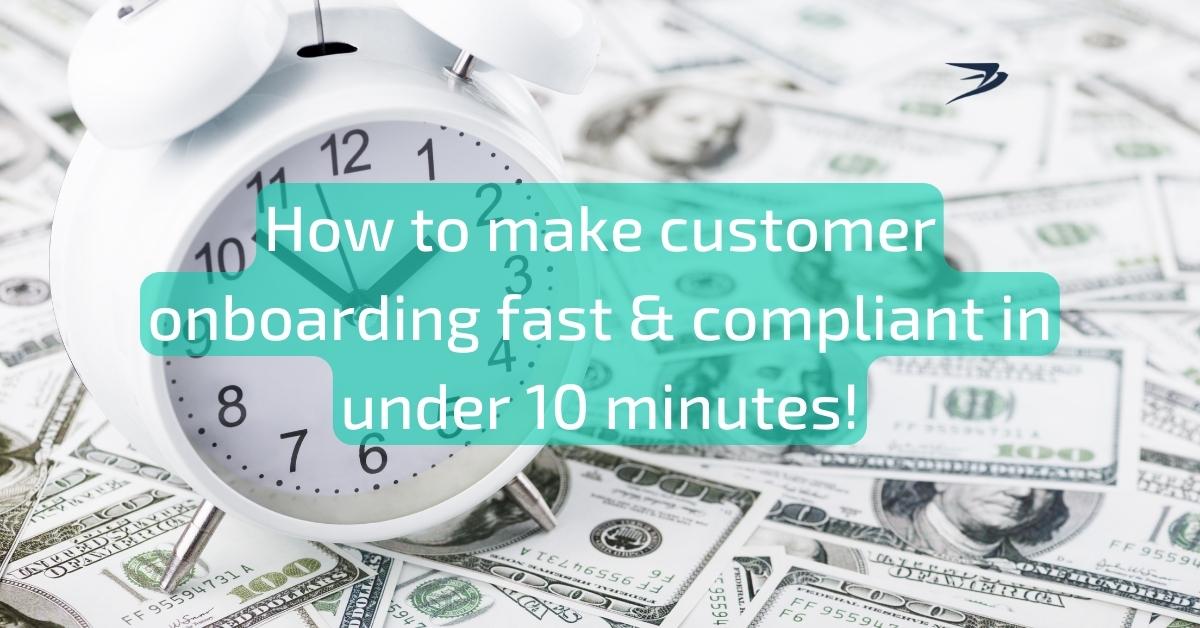
How to make customer onboarding fast & compliant in under 10 minutes!
Christian Paulus / August 23, 2022
Too many banks make the onboarding process difficult for new customers. When customers want to open an account or securities account, they often have to fill out more than 30 mandatory fields. It can take more than a week to open an account, while digital challengers handle this process within minutes.
How can banks overcome this challenge? The central point is perspective! Neo banks prioritize the customers' current situation and build the onboarding process around them. Established institutions struggle with the challenges of internal bank processes with which onboarding must be implemented. Likely, this situation will not be easy to change, even in the long run. However, one solution may be to detach onboarding from the core banking system in a modular fashion and transfer data to the core banking system only when it is really necessary.
Digital? On-site? Hybrid?
Flexibility is often neglected by many providers. Since the outbreak of the Covid-19 pandemic, more and more customers prefer digital touchpoints. Potential clients and existing customers want to decide for themselves how their onboarding process should be done. Visiting the bank to complete the process or filling in the form from home on their PC or cell phone. It is important to give your customers the choice. For last-minute or online-only customers, an appointment with an advisor on-site may be a no-go, but traditional customers could complete some steps themselves in advance but still clarify individual questions in a personal meeting with the advisor.
Legacy IT is no excuse
Even if the questionnaire is short and attractively designed, the challenge of the video call emerges at the latest during legitimation. While Neo banks get by with few media breaks, banks, in particular, have to switch between app, email, SMS, or browser.
If the previous systems are not able to map a modern (hybrid) process, there are now numerous possibilities via API-based click & connect applications to make onboarding more customer-centric and address the individual wishes of the customer, and reduce friction.
For a fast process that puts the customer at the center of onboarding and thus ensures low CAC in the end, here are our TOP 7 recommendations that have always paid off in our work with customers so far!
-1.jpg?width=280&name=Blog%20Pictures%20(4)-1.jpg)
Top 7 Onboarding Recommendations
1. Happy Moments
The onboarding process is tough and tedious for your customers, especially when it involves filling in data fields whose information is not readily available, such as the tax number. Therefore, make sure to include several moments of success or "happy moments" along the click path to keep your potential customer interested and engaged. Motivate and praise your customer:s and make sure that the goal always stays within reach.
2. Onboarding must be as streamlined as possible
When your customers start the onboarding process, they want to complete it as quickly as possible. No one wants to spend more time than absolutely necessary filling out forms or revealing information that is not required for the process. So make sure you limit the process to the legally required questions and ask for everything else in a later interaction with your customer.
3. Remove conversion killers
Have you ever wondered why many of your prospects don't complete the onboarding process? Maybe it's because you have conversion killers during the onboarding process. Conversion killers are usually obstacles that prevent customers from completing a process. Some of these include WPHG questions or the requirement to enter tax ID. To ensure a higher completion rate, you should only use your conversion killers at the end of the process.
4. Retargeting
The gain or loss of customers pays directly into your CAC (Customer Acquisition Cost). That's why it's critical to identify your target customer group as early as possible so that you can retarget them once the onboarding process has been abandoned. Be sure to store the key contact information in compliance with data protection regulations as early as possible during the onboarding process. Provided you have retrieved and stored the key information in a privacy-compliant manner, you can create a multi-level retargeting group and retarget them with multi-channel campaigns.
5. Select 1 channel
Your goal should be to make the onboarding process as easy and smooth as possible for the prospect. Ease of use and user experience are among the most important aspects when designing a high-conversion onboarding process. Therefore, when creating such a process, avoid switching between different channels (e.g. desktop, mobile, online, and offline).
6. Authentication providers
The authentication process is often the last but no less important process step within onboarding. Typically, customers are redirected to a new website hosted by a credential provider. When selecting your legitimation provider, pay special attention to reliability, service times, and reference values about completion rates. Good examples from our experience include Dt. Post, IDnow, and WebID.
7. Analyze & Improve
Once you have implemented all the above tips, it is important to continuously improve the onboarding process by analyzing why and where customers leave the process. Even if you think the process is logical and doesn't need any further improvement, your customers have a completely different view of it. So always keep your customers in mind when analyzing and always ensure a first-class user experience.
How satisfied are you with your onboarding? Are you meeting all seven points or do you have questions about individual topics? Feel free to contact us, our onboarding experts look forward to hearing from you!




